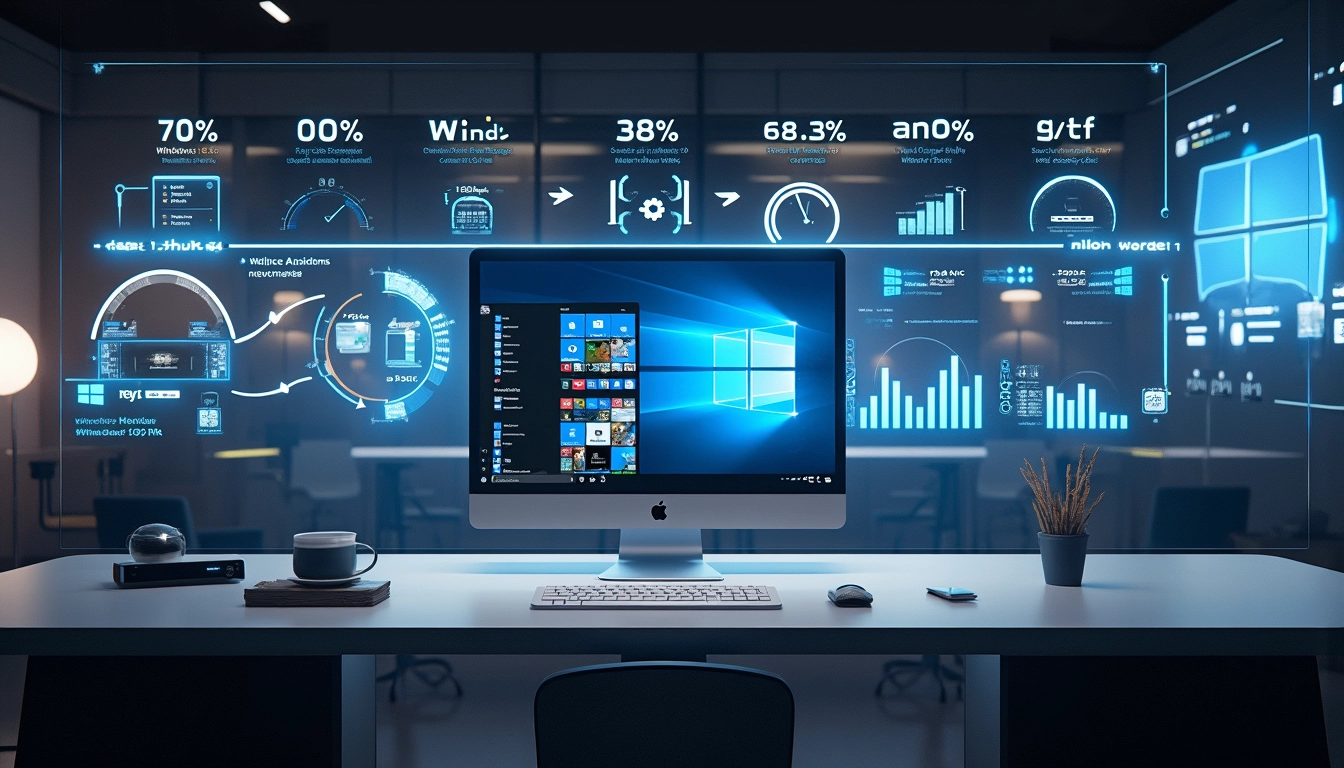
Microsoft Windows Evolution: From DOS Extension to AI-Powered Computing Leader
Microsoft Windows has transformed from a simple DOS extension in 1985 to the world’s leading operating system, marking a revolutionary journey in personal computing. The operating system’s evolution spans multiple decades, introducing groundbreaking features from graphical interfaces to AI-powered functionalities, shaping how we interact with computers today.
Table of Contents
Key Takeaways:
- Windows 1.0 launched on November 20, 1985, featuring basic applications like Paintbrush and Calculator
- Windows commands a 70% market share in desktop operating systems as of March 2023
- The transition from Source Library Manager to Git version control improved code management
- Windows 11 introduced Android app support and stricter hardware requirements
- Current market distribution shows Windows 10 at 58.83% and Windows 11 at 38% usage
The Birth and Evolution of Windows
Windows began its journey as a graphical shell for MS-DOS, running on Intel 8086 and 8088 processors. The initial release included fundamental applications that still exist in modified forms today. The introduction of TrueType fonts and the iconic Ctrl + Alt + Delete command became permanent fixtures in the Windows experience.

Market Dominance and User Base
Windows’ influence on personal computing is undeniable, with 90% of PCs globally running some version of the operating system. Recent security concerns have affected hundreds of millions of users, highlighting the massive scale of Windows’ user base.
Code Management Evolution
The management of Windows’ extensive codebase has seen significant changes. Microsoft’s shift to Git in 2017 marked a major technological advancement in how the company handles its source code. This transition improved development efficiency and collaboration among Windows developers.
Windows 11: A New Era
Windows 11’s latest features and updates showcase Microsoft’s commitment to innovation. The operating system introduced significant changes, including Android app support through WSA, though this feature will conclude on March 5, 2025. The new version emphasizes cloud computing integration and enhanced gaming capabilities.
Future Innovations and AI Integration
Microsoft continues to push boundaries with innovative security enhancements and AI features. The integration of Microsoft Office with cloud services and AI capabilities demonstrates the company’s forward-thinking approach. For those interested in automating their Windows workflows, tools like Latenode offer powerful automation capabilities for various tasks.
Version Comparison and Performance
Windows 10 and 11 differ significantly in their capabilities and requirements. While Windows 10 supports up to two physical processors with varying core limits, Windows 11 introduced stricter hardware requirements, including mandatory 64-bit processor support. These changes reflect Microsoft’s push toward modern computing standards while maintaining backward compatibility where possible.


